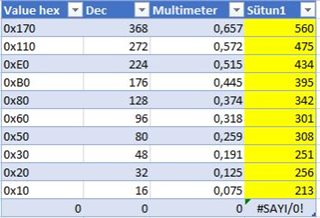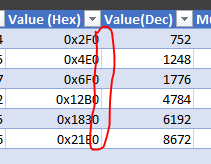Other Parts Discussed in Thread: TLA2024,
Tool/software:
Hello Dear All,
My circuit is exactly same with;

Just my voltage is different.
I applied FSR value 0.512V as shown ;

Here my "Value hex" values is came from TLA2024 to my MCU; "Multimeter" values is the Amper of output.

When I apply load at 10% intervals, I cannot establish a connection between the values I measure with the multi meter and the HEX values I get from TLA2024.
What can I have to do here for my Value Hex? How I figure it out the values to mean values?









